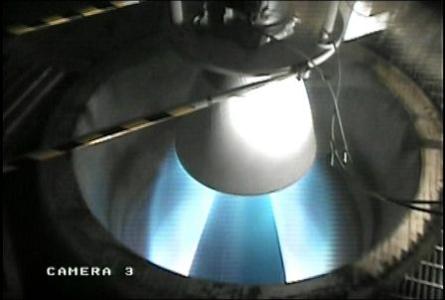An Apollo lunar module ascent engine has been test fired after being in storage for decades to help technology development for NASA's new Moon programme Constellation.
Fired on the auxiliary propulsion system testbed at White Sands Test Facility three times over 25 and 26 June for undisclosed durations, the Pratt & Whitney Rocketdyne RS-18 used liquid oxygen and liquid methane. For Apollo the engine used hypergolic propellants, but NASA wants to switch to cryogenic fuels for an estimated mass saving of 910kg (2,000lb) for its new Altair lunar lander.
|
|---|
Above: Camera 3 at the auxiliary propulsion system testbed at the White Sands Test Facility captures an image of one of the engine firings |
He added that future firings could last for 5s and that there is resistance within NASA against using cryogenics as they do not ignite on contact while hypergolics do, making ignition simple. Ignition pyrotechnics for cryogenic propellants were tested in the third quarter of 2007. Altair is planned to fly to the Moon by 2020 carrying up to four astronauts for a lunar surface mission lasting a week or more.
Source: Flight International



























